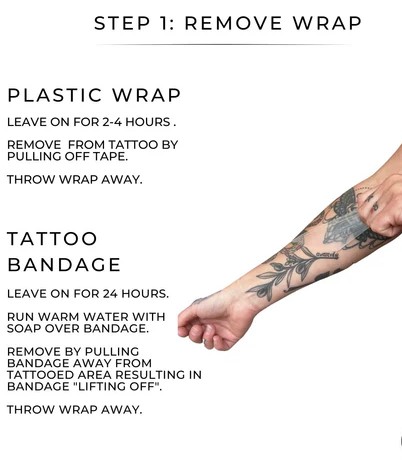BOURSESSENEGAL – Tattoo aftercare is essential for maintaining the quality and longevity of your new body art. Proper care helps prevent infections, promotes healing, and keeps your tattoo looking vibrant for years to come. In this comprehensive guide, we will explore the best practices for tattoo aftercare, what to expect during the healing process, and common mistakes to avoid.
Understanding Tattoo Aftercare
Tattoo aftercare refers to the steps you should take after getting a tattoo to ensure it heals properly. Aftercare isn’t just about keeping your tattoo looking good; it also prevents complications such as infections and scarring. Knowing what to do right after your tattoo session is crucial for a successful healing process.
The Importance of Proper Aftercare
Proper tattoo aftercare helps maintain the integrity of the ink and the skin. When you take care of your tattoo, you reduce the risk of fading and ensure that colors stay vibrant. Additionally, proper care minimizes the chances of developing skin issues that could lead to more significant problems down the line.
The Healing Process
Stages of Healing
Understanding the stages of healing can help you know what to expect after getting a tattoo. Generally, the healing process can be divided into three main stages:
- Initial Healing (Days 1-7): The tattooed area may be red, swollen, and tender. It’s normal for some fluid to ooze from the tattoo. During this time, your body begins to form a protective scab over the tattoo.
- Peeling Phase (Days 7-14): After the initial healing, your tattoo may start to peel. This is your skin shedding dead cells. Do not pick at the peeling skin, as this can damage the tattoo.
- Final Healing (Days 14-30): The tattoo will look brighter and more defined as the skin fully heals. However, it can take several weeks for the skin to completely recover.
What to Expect During Each Stage
During the healing process, you may experience discomfort or itchiness. Understanding these sensations can help you cope better:
- Itching: This is a normal part of the healing process. Avoid scratching the tattoo, as this can cause damage.
- Dryness: Your skin will likely feel dry as it heals. Keeping the area moisturized can help alleviate this sensation.
- Color Changes: It’s common for tattoos to appear dull during the healing process. Don’t worry; they often become more vibrant once fully healed.
Essential Tattoo Aftercare Tips
1. Follow Your Artist’s Instructions
Every tattoo artist may have slightly different aftercare instructions based on their techniques and the type of ink used. Always prioritize their advice and follow their specific recommendations.
2. Keep It Clean
In the first few days after getting your tattoo, it’s vital to keep the area clean. Use a mild, fragrance-free soap to gently wash the tattoo. Avoid using loofahs or harsh scrubbing, which can irritate the skin.
3. Apply a Thin Layer of Ointment
After cleaning, apply a thin layer of a recommended ointment. Products like Aquaphor or a specialized tattoo aftercare balm work well. Avoid petroleum jelly, as it can clog pores and lead to breakouts.
4. Moisturize Regularly
Once the initial healing phase is over, switch to a gentle moisturizer. Look for products free of fragrances and alcohol, as these can irritate the skin. Keeping your tattoo hydrated prevents dryness and helps maintain its vibrancy.
5. Avoid Soaking
In the first two weeks, avoid soaking your tattoo in water. This includes baths, hot tubs, and swimming pools. Submerging your tattoo can increase the risk of infection.
6. Protect from the Sun
UV rays can fade your tattoo. In the healing phase, keep your tattoo covered or apply a broad-spectrum sunscreen with at least SPF 30. This protection ensures the colors remain vibrant for years.
7. Wear Loose Clothing
Tight clothing can rub against the tattoo, causing irritation. Opt for loose-fitting clothes, especially during the healing process, to avoid friction and promote healing.
Common Mistakes to Avoid
1. Picking at Scabs
As your tattoo heals, it will form scabs. While it might be tempting, picking at these scabs can lead to scarring and uneven ink. Let your skin heal naturally.
2. Ignoring Signs of Infection
If you notice excessive redness, swelling, or pus, seek medical advice. Early intervention can prevent complications. Do not hesitate to reach out to a healthcare professional if you have concerns.
3. Using Harsh Products
Avoid using alcohol-based products or heavily scented lotions on your tattoo. These can irritate your skin and delay the healing process. Stick to gentle, fragrance-free options.
4. Over-moisturizing
While keeping your tattoo moisturized is important, overdoing it can lead to clogged pores and breakouts. Apply a thin layer of ointment or moisturizer, and let your skin breathe.
When to Seek Professional Help
If you experience severe pain, swelling, or signs of infection, consult your tattoo artist or a healthcare professional immediately. It’s better to address potential issues early on rather than waiting for them to worsen.
Conclusion
Tattoo aftercare is crucial for ensuring your ink remains beautiful and vibrant for years to come. By following proper aftercare practices, you can promote healing and avoid common pitfalls. Remember to keep your tattoo clean, moisturized, and protected from the sun.
Embrace your new art and take the necessary steps to care for it. With the right attention and love, your tattoo can be a lasting expression of your individuality. Enjoy the journey of healing and the beauty of your new body art!
REFERENCE : diamond4d



